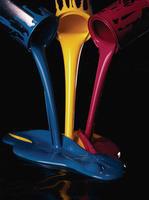Polyvinyl chloride (PVC) is a versatile and resource efficient thermoplastic with the widest range of applications of any of the plastics family making it useful in virtually all areas of human activity.
Without additives PVC would not be a particularly useful substance, but its compatibility with a wide range of additives – to soften it, colour it, make it more processable or longer lasting, results in a broad range of potential applications from car underbody seals and flexible roof membranes to pipes and window profiles.
PVC products can be rigid or flexible, opaque or transparent, coloured and insulating or conducting. There is not just one PVC but a whole family of products tailor-made to suit the needs of each application. Unlike most other thermoplastics, the majority of PVC applications have a lifetime of between 10 and 100 years.
This requires proven durability and stabilisers play an important part in achieving such performance. All polymers require stabilisers of one sort or another; PVC is no different in this respect.
Formulating PVC Products
Before PVC can be made into products, it has to be combined with a range of special additives. The essential additives for all PVC materials are stabilisers and lubricants; in the case of flexible PVC, plasticisers are also incorporated.
Other additives which may be used include fillers, processing aids, impact modifiers and pigments. Additives will influence or determine the mechanical properties, light and thermal stability, colour, clarity and electrical properties of the product.
Once the additives have been selected, they are mixed with the polymer in a process called compounding. One method uses an intensive high-speed mixer that intimately blends all the ingredients. The result is a powder, known as a ‘dry blend’, which is then fed into the processing equipment.

 This can either be a compounding extruder, or other special equipment for making PVC compounds.
This can either be a compounding extruder, or other special equipment for making PVC compounds.







